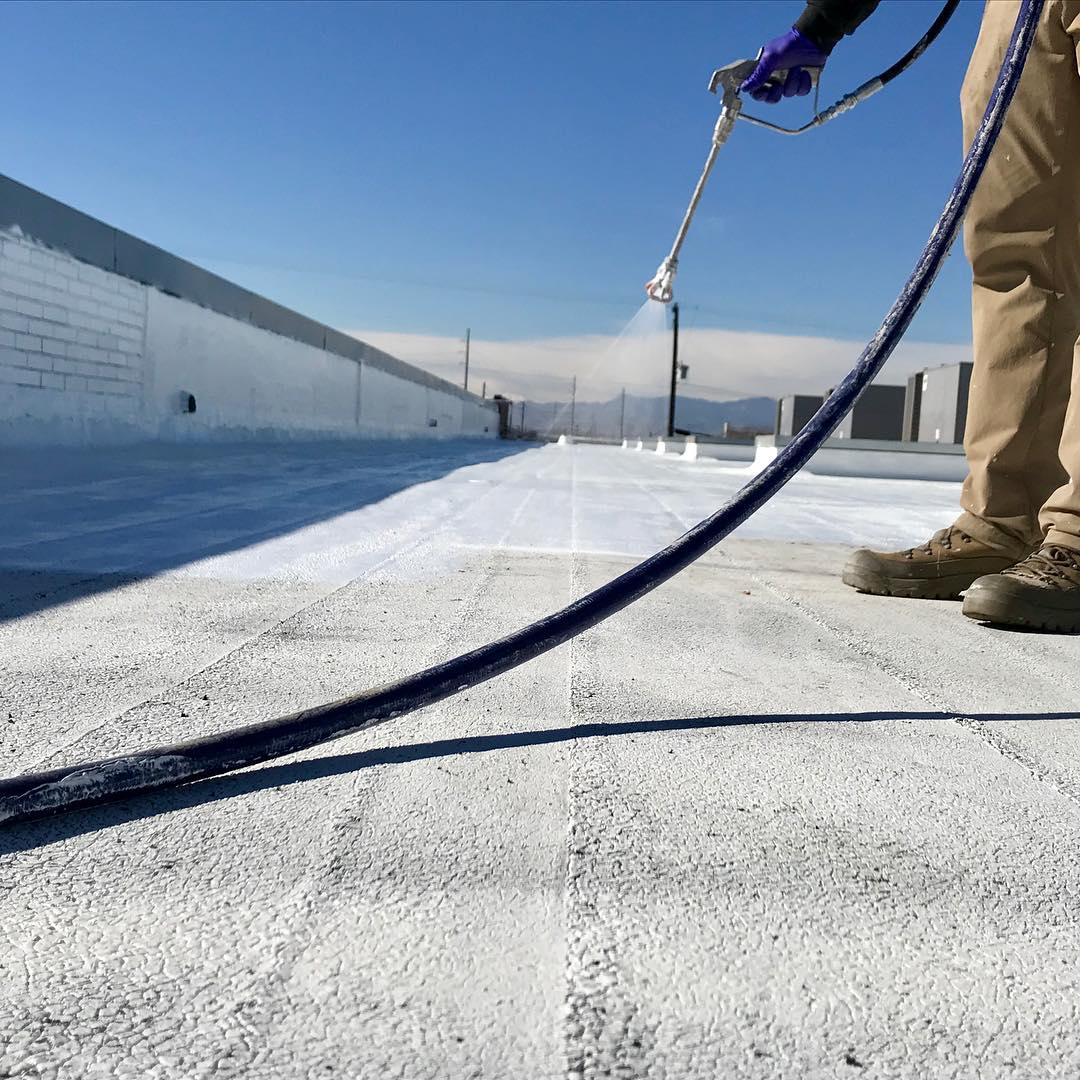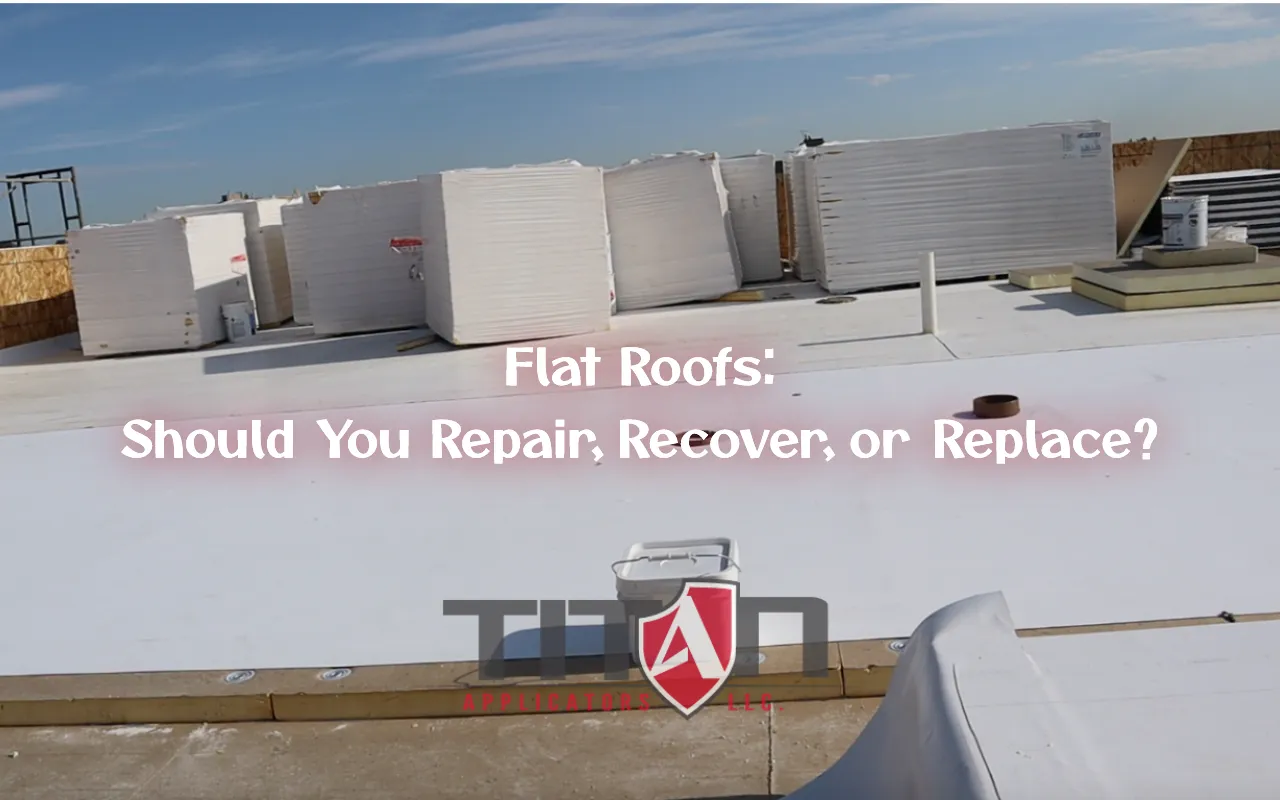Which Costs You More: Repair, Recover, or Replace?
Even if a commercial roof is installed correctly and well cared for, leaks - and repairs - will eventually occur and become more frequent. Will it continue down that road of becoming a major problem where replacement is inevitable, or will you get lucky with your property manager's latest repair? We hate to break it to you, but the odds of needing fewer roof repairs over time are low.
There are many different roofing options available for flat and low-slope roofs. Each individual system has a relative performance compared to the performance outcome measures of other roofing system options. There are constantly new and innovative roofing materials on the market that challenge older roofing systems. Choosing the right flat-roofing system for your commercial or industrial building is like choosing a new vehicle for your family: budget, aesthetics, performance record, maintenance, occupants needs, etc.

Roof Repair vs. Roof Replacement
The key part of this decision is to understand where your existing roof is currently at on its life cycle. The answer to this question may be an easy one when when previous repair efforts seem to be futile and it is no longer economical to constantly chase roof leaks. But, just like other important aspects of your commercial facility, the answer typically isn’t totally obvious. Typically, a roof that is reaching the end of its life cycle begins to reveal smaller issues: surface deterioration, cracks or splits in the membrane, separating seams, and bubbles (blisters). The worse case scenario is to discover an aging roof by way of a roof leak. That is why a routine roof management schedule is so important; it allows you to get a baseline on the condition of your roof and catch small issues before they become larger problems.
Repairing a commercial roof is almost always more cost effective than replacing it, when proper investigation and reasoned decisions are used.
Here are a few things to consider when deciding to repair or replace:
- Find and review the original roof specifications and drawings, if possible.
- Closely inspect and document the flashing and membrane details of your existing roof.
- Check the roof for evidence of ponding water.
- Take core samples to determine the presence of moisture under the roofing system.
- Inspect the inside of the building to see the condition of the roof deck and other structural components of the building.
Roof Recovery vs. Tear-Off and Replacement
The most common question we receive is whether or not an existing roof can be recovered. This is usually after a property manager has received a bid from another roofing contractor to remove and replace the existing roofing system and they want a cheaper alternative.
Recovering a low-slope commercial roof has many benefits: Lower cost Shorter project schedule Minimal disruption to facility operations No landfill disposal Easier to maintain a water-tight structure during work Like-new roof warranties
Regardless of the means and methods used, hiring a competent roofing contractor is the most important part. Ensuring that the job is done correctly may cost more up-front but will save you plenty of money in the long run by extending the life of the roof and reducing the possibility of premature failure.

Can I recover my existing roof?
Most building codes will determine whether or not an existing flat roof may be recovered. Generally, building codes will allow a commercial flat roof to be recovered when these conditions are met:
- The existing roof and/or insulation are not saturated with water.
- There are not more than two existing roofing systems on your building. (Varies by municipality)
- The roof structure is able to support the additional weight (dead load) of a new covering. (Roof coatings may help avoid this issues.)
- The existing roof deck is sound and has no evidence of moisture damage.
- The existing roofing system is properly and securely fastened to the structure.
- Existing flashings and fasteners are installed adequately.
Owners & Occupants: Roofing Concerns
A roofing project has different concerns among different groups of people. Obviously, owners of a commercial or industrial facility have a lot ore to think about; protecting their bottom line take place at the top of the list. With that said, occupants/tenants of a building are most concerned about the interruption of their day-to-day business operations. Re-roofing options may cause a significantly more amount of noise, dust, debris, order, and other hazards than a roof recovery.
Property managers and facility owners must make a thorough analysis of the options at hand. The goal is to have a durable, water-tight, and energy efficient system that can be installed with little-to-no interruption of the building tenants. Furthermore, they want it done at a reasonable cost and without problems in the relatively near future.
Facility executives should look beyond the up-front cost when deciding between a restoration or replacement.
A roofing contractor has nothing to lose if they recommend a complete replacement. [Generally speaking] If you do a full roof replacement and the roof performs great for the length of the warranty, both sides are happy. But, what if you could've gotten away with a few simple repairs that cost 5% of a replacement? Or, what if you could have restored your existing roof at 50% of a replacement and gotten another 10-20 years out of its' life?
If you replace your roof too soon, you're wasting good money.
If you replace your roof too late, you're spending thousands of dollars in repairs and then replacing it anyway.
Since 2015, Titan Applicators has been providing Colorado real estate executives & commercial facility owners with the most cost-effective solutions to their roofing problems. Our goal is to educate building owners so they not only know the status of their roof but also provide them solutions which best protect their bottom line. - We want to earn your business today & tomorrow.
Have a conversation with one of our roofing pros today!







